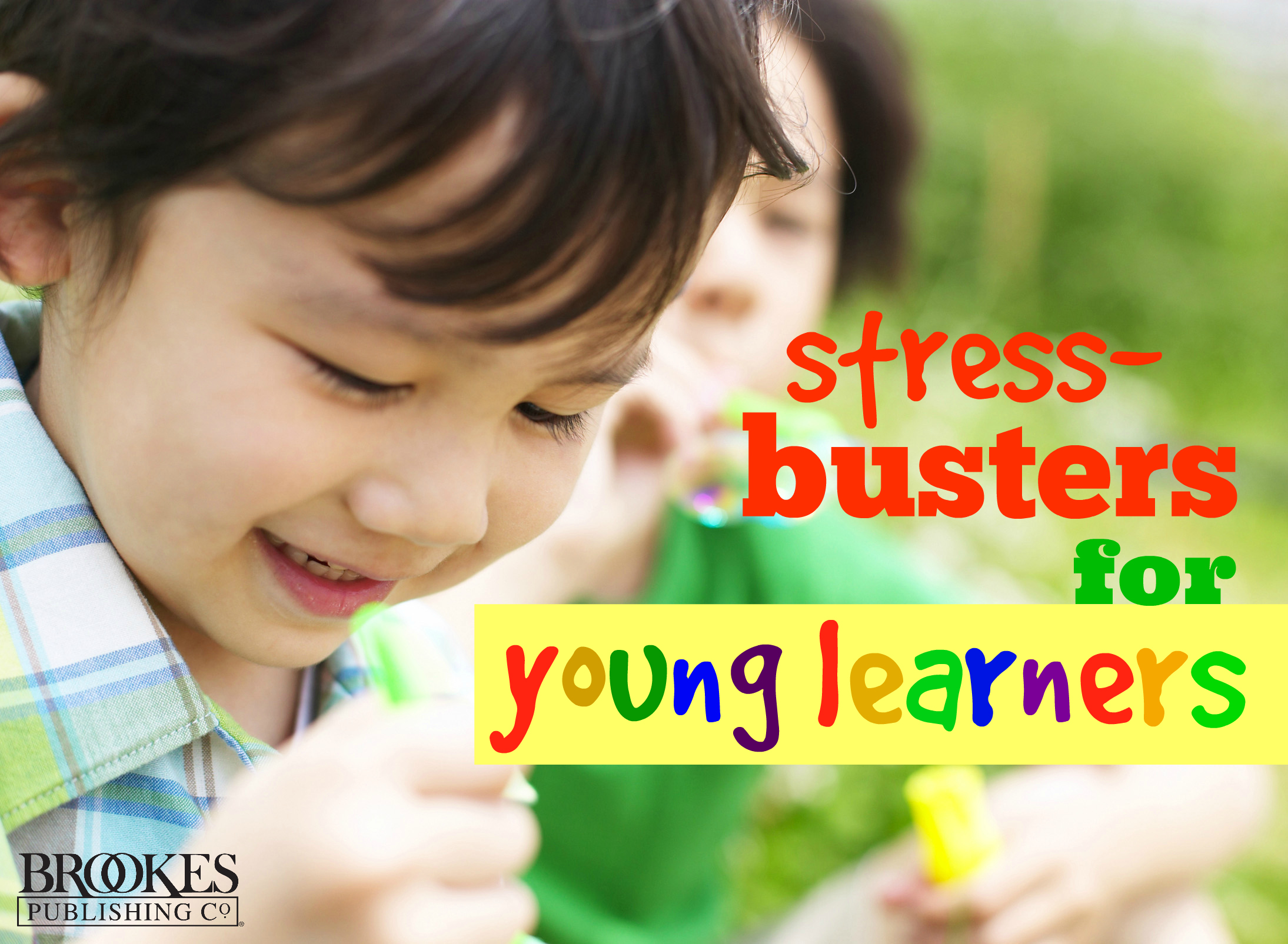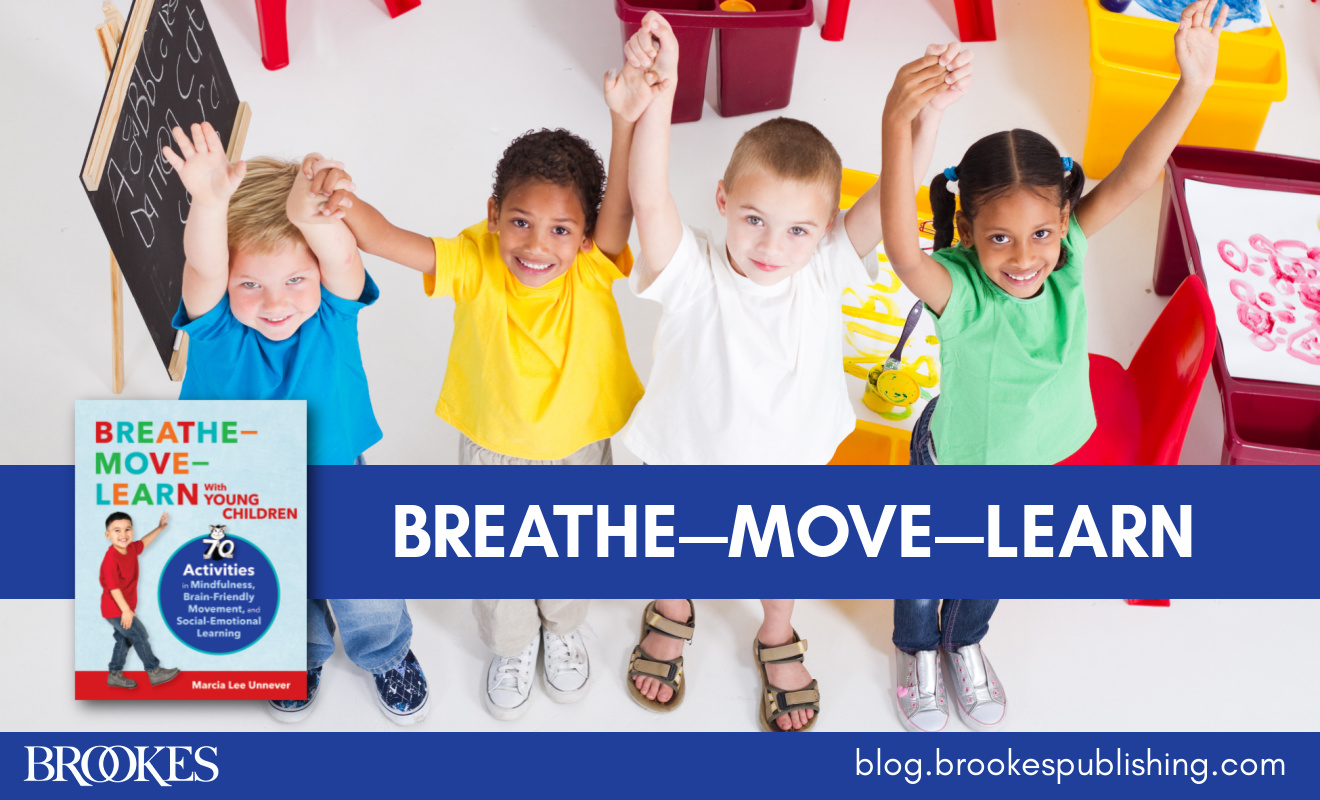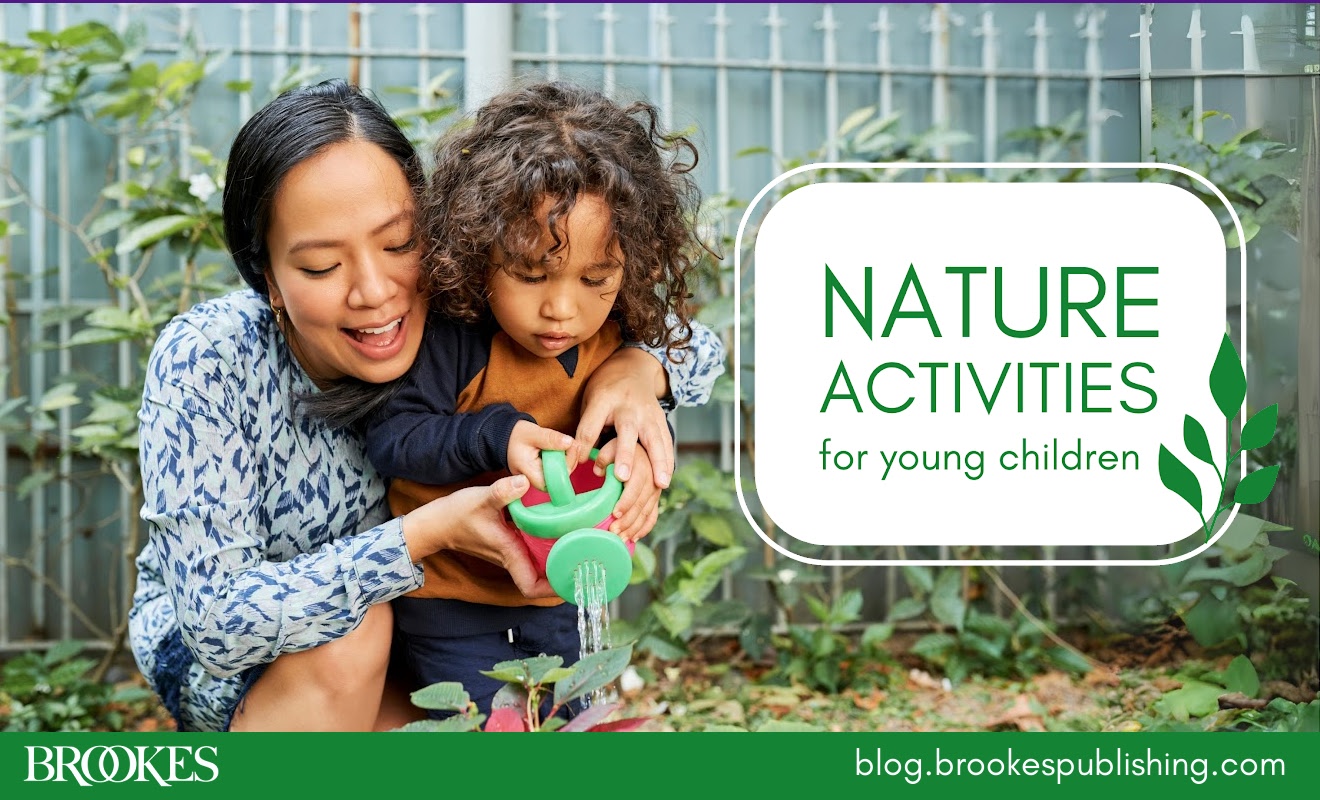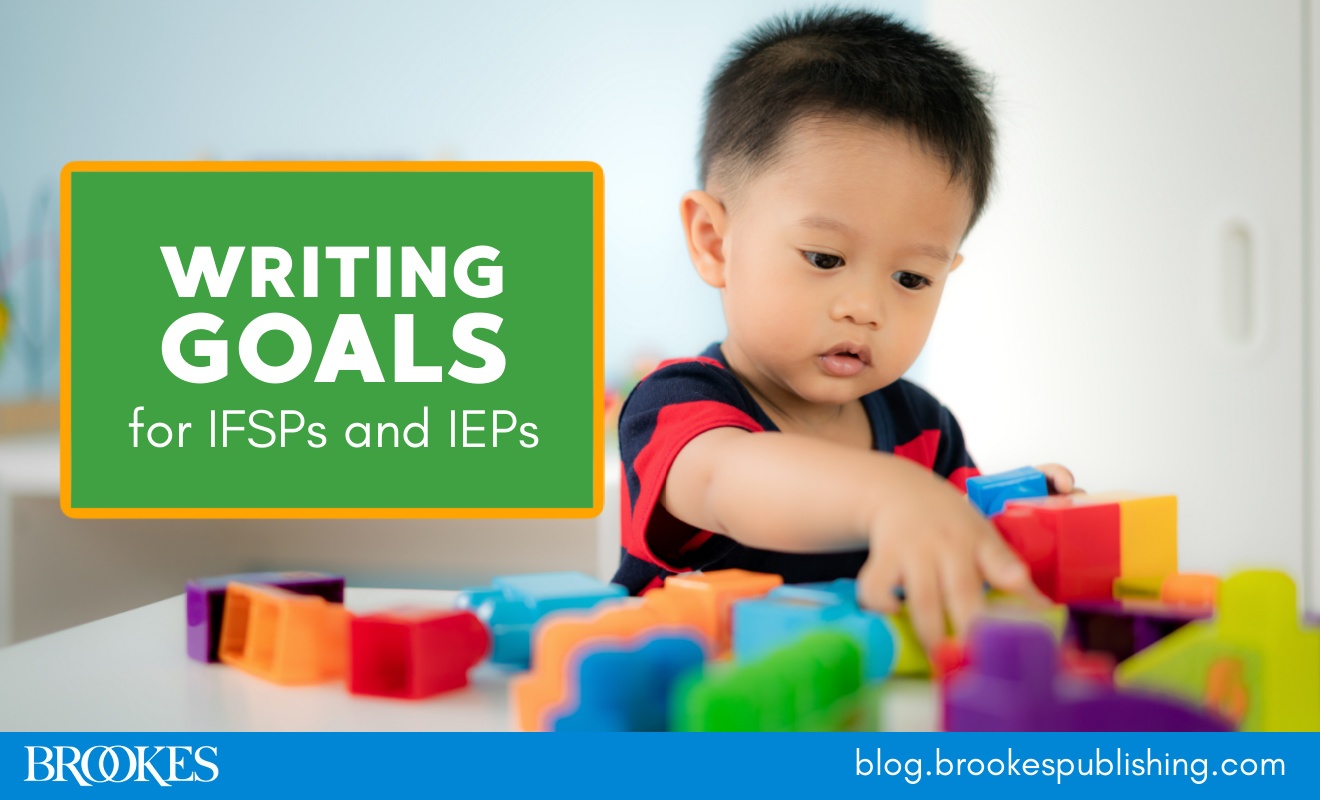9 Stress-Reducing Strategies for Young Learners
March 10, 2016
Group time in your classroom is an ideal time to teach early literacy and math concepts, but it’s also a perfect opportunity to teach stress-reducing strategies to your young learners. Today we’re bringing you 9 proven stress-busters for young children, ready for you to start using in your inclusive classroom to address the social-emotional needs of students. These are adapted from Alice Honig’s Little Kids, Big Worries, a warm and wise little book from a celebrated expert on early childhood. (Need an in-depth program for addressing social-emotional skills in young children? We highly recommend this one!)
Set Aside Group Time to Talk About Feelings
Young children need to have the vocabulary to talk about complex emotions. Teach them words like proud, worried, excited, frustrated, embarrassed, and amazed, and talk about them during group time. Be sure to acknowledge negative as well as positive emotions when children express them, since every emotion shared provides great insight into the child’s mind—and gives you the knowledge you need to help them through difficult times.
Be Flexible During Transitions
Transitions are a time when many children feel stressed and overwhelmed, especially if they have trouble accomplishing what’s expected of them. Be flexible as much as possible during transitions from one group activity to the next. For example, some kids eat slowly and hate to be rushed, so allow them to eat their snack at their own pace and let other students get up and play if they finish first. During transitions from outdoor play, try to avoid shushing or scolding kids who have trouble slowing down and switching on their “indoor voices” right away. Instead, make a game of it. Ask children to put on imaginary earphones and pretend they’re listening to dreamy outer space music while coming back inside.
Show Them Mistakes are Okay
Everyone makes mistakes when learning new skills and navigating new social situations—even grownups. When kids really believe that, they’ll be less likely to stress over their own mistakes. Alice Honig says: “Once when I yawned, a preschooler informed me that I needed to cover my mouth when I yawn. That is her mommy’s rule! And I agreed with her that it was a good rule for politeness. Making a mistake is not a sin like uncaring or hurting behavior.” Owning up to small mistakes you make in the classroom can go a long way toward soothing children’s worries when they mix up the rules of a new game, accidentally hurt a friend’s feelings, or spill the juice at snack time.
Encourage Conversations with Children from Diverse Backgrounds
Children often feel stressed when they feel alienated from the rest of the class. Here are some tips for helping students from diverse backgrounds and abilities find their common ground:
- Have your students share their home experiences with each another during group activities, so kids deepen their awareness of different cultures and family structures.
- Talk about different foods and mealtime routines during snack time.
- Have children chat about their favorite TV shows, games, and hobbies—a great way to help kids look past differences and realize how much they have in common.
- Start a conversation with the children about their biggest worries and how they deal with them. Kids will feel closer to each other if they realize they share common fears, and it might help them to hear how their classmates deal with their worries.
Infuse the Day with Patterns & Rituals
Children are less likely to feel anxious and stressed when routines and patterns are predictable. Using a special greeting each morning is a fun ritual that helps kids ease into the day and come together as a group. Choosing a particular song that tells kids when it’s time to put away toys or time to use their inside voices can help children make smooth transitions and stay calm during the day. Celebrate special events like birthdays with predictable rituals, too: for example, make it a tradition to have each child tell the birthday boy or girl something nice.
Reduce Tensions through Art Activities
Group art activities are more than just fun—they provide children with a powerful outlet for their emotions. Alice Honig describes one example in her book: “Lonnie drew a bus and then scribbled all over it with a brown marker. The teacher was puzzled. She did not act disappointed by his scribbles. She did ask him gently to tell her about his picture. The child soberly explained, “That is the ambulance that took my dad to the hospital.” The brown scribbles over Lonnie’s picture expressed his dark scared feelings about his father’s illness. Art can also be a way to express and amplify joy, as children work with bits of bright paper, glitter, stickers, and gloopy paint in vivid colors.
Keep a Peace Rose
Keep a silk Peace Rose in your classroom. When a conflict arises during a group activity, the children can go get the Peace Rose to help resolve the conflict. (You can prompt this by saying “Do you need to go get the Peace Rose?” when you see an argument beginning.) The first child holding the rose gets a chance to say what happened, how she feels about it, and what she thinks the solution should be. Then the other child gets to hold the rose and tell his side of the story. The Peace Rose rule is that children must interact directly with each other to solve their problem. When they agree on a solution, they both say, “We declare peace.”
Use Puppets To Model Behavior
Puppets are a fun and effective way to teach peaceful conflict resolution strategies. Collect a cast of store-bought or handmade puppet characters, give them names like Homer Helper and Frannie Fixer, and make up little skits and dialogues that demonstrate how to resolve problems and help peers who are upset. Modeling words and behaviors explicitly can help kids adopt kind, sharing, and helping behaviors. And the more kids show these behaviors, the less stressful your classroom will be for everyone!
Empathize with Outsized Child Fears
Sometimes it’s hard to remember how scary the world often felt when you were a young child. An adult might find it difficult to understand the fear of a young child who quakes at thunderstorms, or the despair a child feels when she imagines being abandoned by a trusted person like a parent or caregiver. Even if a child’s fears seem unrealistic or exaggerated to you, approaching him or her with empathy and understanding will help alleviate stress.
What are your favorite stress-reducing strategies for young children? Add yours in the comments below!
KEEP READING: Alice Honig has some great ideas on taking care of YOU, too. Read this post on stress-busting strategies for teachers!





Write a Comment
Your email address will not be published. Required fields are marked *
Post a Comment